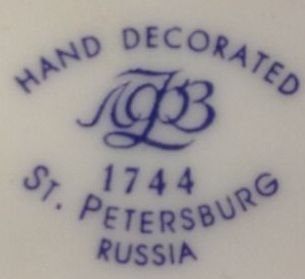When we think about exquisite craftsmanship, the unique art of hand-decorated items from 1744 in St. Petersburg, Russia, often emerges as a hallmark of timeless beauty and intricate detail. This article will take you on a journey exploring the significance, styles, and remarkable pieces from this period, enriching your appreciation for this beautiful art form.
The Historical Context of 1744 St Petersburg
St. Petersburg, the cultural heart of Russia, was founded by Peter the Great in 1703. By 1744, it had blossomed into a magnificent city, known for its architecture, art, and culture. This period marked a significant evolution in Russian craftsmanship, particularly in decorative arts.
The Influence of Peter the Great
Peter the Great’s vision for St. Petersburg was to create a “window to the West.” He invited artists and craftsmen from Europe, which influenced the decorative arts significantly. The blend of Russian traditions and Western styles laid the foundation for the unique decorative art styles emerging in St. Petersburg during the mid-18th century.

Significance of Hand Decorated Items
Hand-decorated items from 1744 are not merely functional objects; they are representations of cultural identity, wealth, and artistic prowess. Each piece tells a story, showcasing the skills of the artisans who meticulously crafted them.

Key Features of Hand Decorated Items from 1744 St Petersburg
To truly appreciate these artworks, let’s explore their defining characteristics.

Materials Used
- Porcelain: Often used due to its elegance and ability to hold fine details.
- Wood (Lacquered): Common for decorative boxes and furniture, showcasing intricate carvings.
- Textiles: Made from silk and velvet, often featuring elaborate embroidery.
Common Motifs and Themes

| Motif | Description |
|---|---|
| Floral Patterns | Symbolizing beauty and nature, often used in porcelain painting. |
| Scenes of Russian Folklore | Illustrating tales from Russian history and legend, showcasing cultural storytelling. |
| Geometric Designs | Reflecting symmetry and balance, typical in wooden items. |
Color Palette

The color palette of 1744 hand-decorated items is vibrant, often incorporating rich blues, golds, and greens. These colors were not only aesthetically pleasing but also symbolized wealth and prestige.
Noteworthy Artisans and Workshops

Numerous talented artisans and workshops contributed to the legacy of hand-decorated items in St. Petersburg. Here are a few notable names:
The Imperial Porcelain Factory
Founded in 1744, this factory became a cornerstone of Russian porcelain production. Their pieces often featured elaborate designs and were highly sought after.

The Sèvres Influence
Inspired by French porcelain, St. Petersburg artisans began to incorporate similar techniques while adding distinctive Russian themes.
Comparing Hand Decorated Items from 1744 with Other Periods
Understanding the differences between various historical periods can enhance your appreciation for these beautiful artworks.
| Period | Characteristics | Key Artworks |
|---|---|---|
| 1744 St Petersburg | Intricate designs, vibrant colors, and a mix of Russian and Western influences. | Imperial porcelain vases, lacquered boxes. |
| 19th Century | More focus on naturalistic themes, realism. | Landscape paintings on porcelain, detailed embroidery. |
| 20th Century | Modernism and abstract art take precedence; less emphasis on traditional themes. | Abstract decorative pieces, minimalist designs. |
How to Spot Authentic Hand Decorated Items
If you’re interested in collecting these items, it’s crucial to know how to identify authentic pieces. Here are some tips:
Examine the Craftsmanship
- Look for inconsistencies in the paint – true hand-painted items will have slight variations.
- Check the quality of the materials used; authentic pieces often use high-grade porcelain or wood.
Provenance
Research the item’s history. Provenance can greatly affect value and authenticity. Documentation or certificates can enhance credibility.
Expert Appraisals
When in doubt, consult with an expert or appraiser who specializes in Russian antiques. They can provide valuable insights.
The Modern Market for Hand Decorated Items
The appeal of hand-decorated items from 1744 doesn’t just lie in their historical significance but also in their marketability today.
Values and Collectibility
Prices for authentic pieces can range significantly based on their condition, rarity, and market demand. Below is a rough estimate of values:
| Item Type | Estimated Value |
|---|---|
| Porcelain Vase | $800 – $5000 |
| Lacquered Box | $200 – $3000 |
| Embroidery Piece | $100 – $1000 |
Where to Buy
Many collectors turn to auctions, antique shops, and online marketplaces. Websites like eBay and specialized antique websites often have listings for authentic pieces.
Pros and Cons of Collecting Hand Decorated Items
Pros
- Rich historical significance connected to Russian culture.
- Exceptional craftsmanship and aesthetic appeal.
- Potential investment value as demand grows.
Cons
- High prices for authentic pieces can be a barrier to entry.
- Risk of counterfeit items in the market.
- Maintenance and care for delicate items can be challenging.
Frequently Asked Questions
What are the common decorative methods used in 1744 St Petersburg items?
Common methods include hand painting, gilding, and intricate wood carvings, often incorporating floral and folkloric designs.
How can I maintain and care for hand-decorated pieces?
Keep items away from direct sunlight, handle them with care to avoid chips, and clean them gently with a soft cloth.
Are there replicas of these items available?
Yes, many manufacturers produce replicas, but they rarely match the quality and uniqueness of authentic hand-decorated items from 1744.
Where can I find authentic pieces from 1744 St Petersburg?
Authentic pieces can be found through auctions, antique dealers specializing in Russian art, and reputable online platforms.
Conclusion: A Timeless Elegance
The hand-decorated items from St. Petersburg, Russia, in 1744 exemplify a unique blend of culture, artistry, and history. By understanding their significance and how to identify genuine pieces, collectors and enthusiasts can appreciate these artifacts on a deeper level. Whether you’re a seasoned collector or simply an admirer of beautiful art, the enchanting world of 1744 St. Petersburg awaits your exploration.